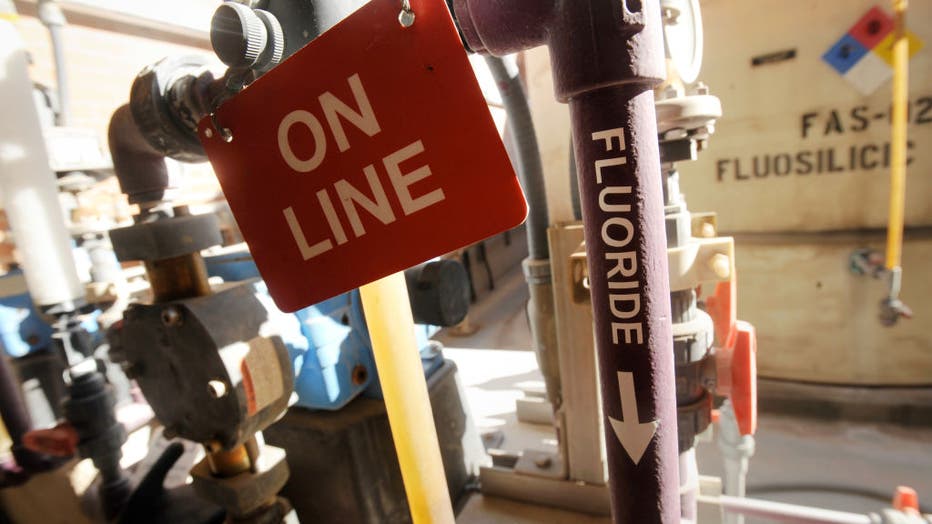Fluoride: What is it and why is it added to our drinking water?
How does RFK Jr's Trump endorsement impact election?
Robert F. Kennedy Jr.'s campaign said in a court filing that he is endorsing Donald Trump for president. 24Sight's Tom LoBianco joined LiveNOW's Andrew Craft to discuss the impact on the 2024 presidential election.
The topic of fluoride in drinking water has surfaced in the upcoming election after Robert F. Kennedy Jr. claimed former President Donald Trump would push to remove the chemical on his first day in office if elected president.
Kennedy, a prominent proponent of debunked public health claims, has been promised to be put in charge of health initiatives by Trump.
Kennedy made the declaration Saturday on the social media platform X alongside a variety of claims about the heath effects of fluoride.
"On January 20, the Trump White House will advise all U.S. water systems to remove fluoride from public water," Kennedy wrote. Trump and his wife, Melania Trump, "want to Make America Healthy Again," he added, repeating a phrase Trump often uses and links to Kennedy.
RELATED: Long Island hospital offers donor breast milk for new moms in need
Trump told NBC News on Sunday that he had not spoken to Kennedy about fluoride yet, "but it sounds OK to me. You know it’s possible."
What is fluoride?
Fluoride strengthens teeth and reduces cavities by replacing minerals lost during normal wear and tear, according to the U.S. Centers for Disease Control and Prevention.
The addition of low levels of fluoride to drinking water has long been considered one of the greatest public health achievements of the last century.

Close-up of a fluoride pipe at the Davis Water Treatment Plant, Austin, Texas, November 18, 2009. Visible in the backgound are fluosilicic acid tanks. (Photo by John Anderson/The Austin Chronicle/Getty Images)
History of fluoride in drinking water
In 1950, federal officials endorsed water fluoridation to prevent tooth decay, and continued to promote it even after fluoride toothpaste brands hit the market several years later.
Though fluoride can come from a number of sources, drinking water is the main source for Americans, researchers say.
How fluoride levels are regulated
Officials lowered their recommendation for drinking water fluoride levels in 2015 to address a tooth condition called fluorosis, that can cause splotches on teeth and was becoming more common in U.S. kids.
RELATED: Half of US teens spend over 4 hours daily on screens, CDC study finds
Since 1962, the government has recommended a range of 0.7 milligrams per liter for warmer climates where people drink more water to 1.2 milligrams in cooler areas. The new standard is 0.7 everywhere.
Health risks of fluoride
In August, a federal agency determined "with moderate confidence" that there is a link between higher levels of fluoride exposure and lower IQ in kids. The National Toxicology Program based its conclusion on studies involving fluoride levels at about twice the recommended limit for drinking water.
AI technology in dentistry
VideaHealth founder and CEO Florian Hillen explains how A.I. advancements in dentistry can help detect cavities and gum disease earlier than ever. (Credit: Cavuto Coast to Coast/FOX Business)
A federal judge later cited that study in ordering the U.S. Environmental Protection Agency to further regulate fluoride in drinking water. U.S. District Judge Edward Chen cautioned that it’s not certain that the amount of fluoride typically added to water is causing lower IQ in kids, but he concluded that mounting research points to an unreasonable risk that it could be. He ordered the EPA to take steps to lower that risk, but didn’t say what those measures should be.
To limit fluoride for young children, the Centers for Disease Control and Prevention offers this advice: Don’t use fluoride toothpaste for children under 2 unless recommended by a dentist; use only a pea-sized amount of toothpaste for children 2 through 6, and avoid fluoride mouthwash.

